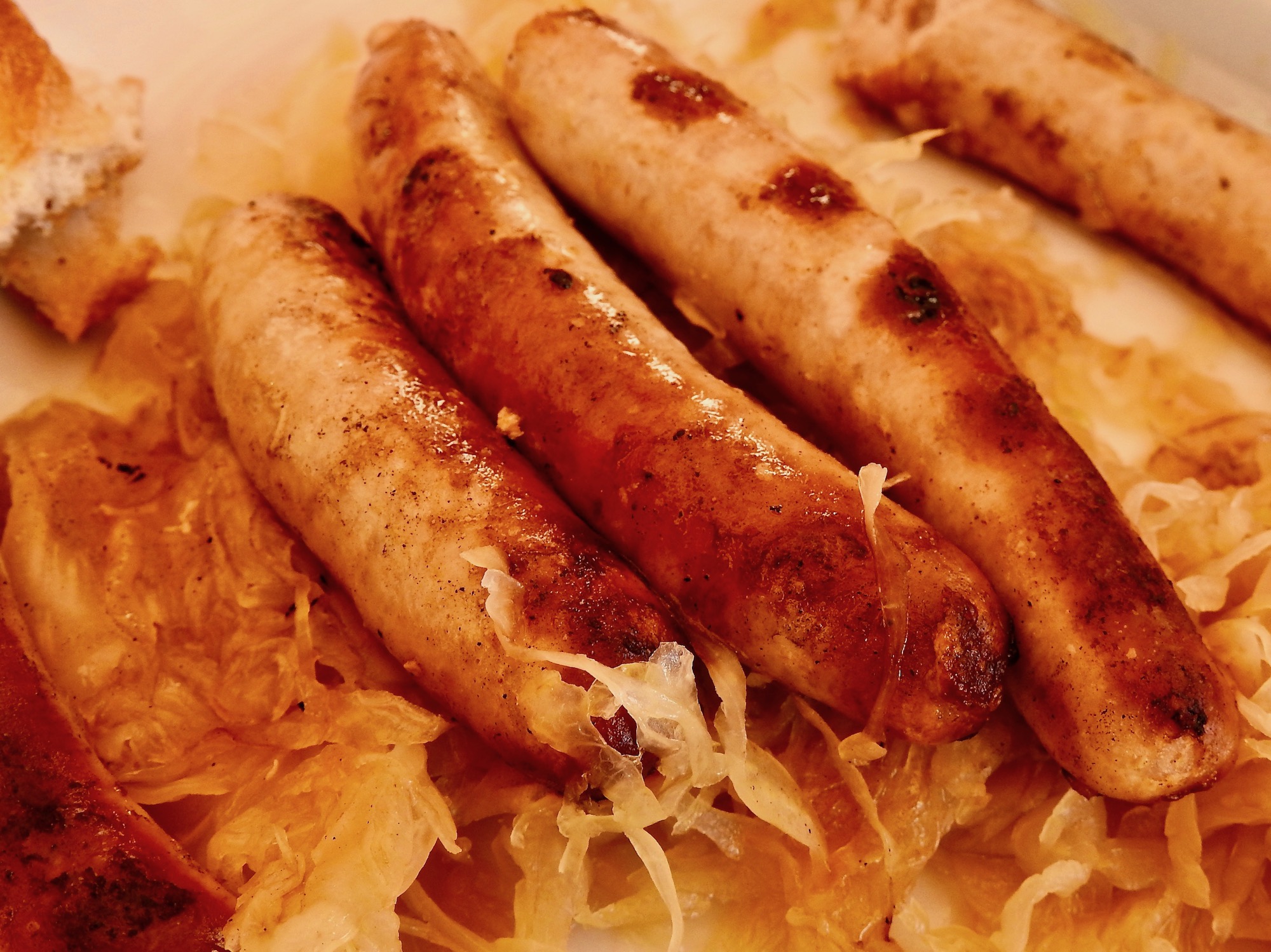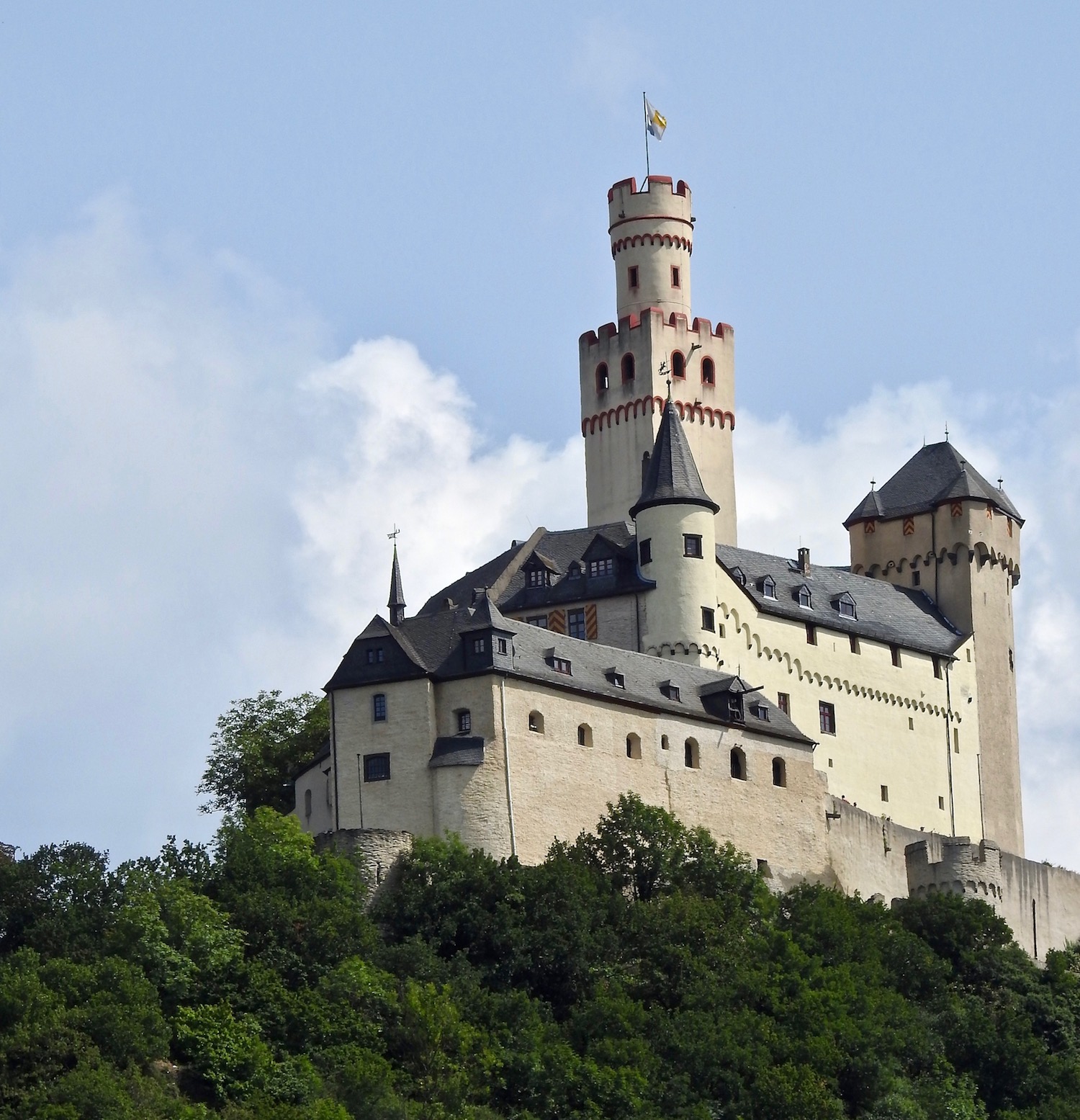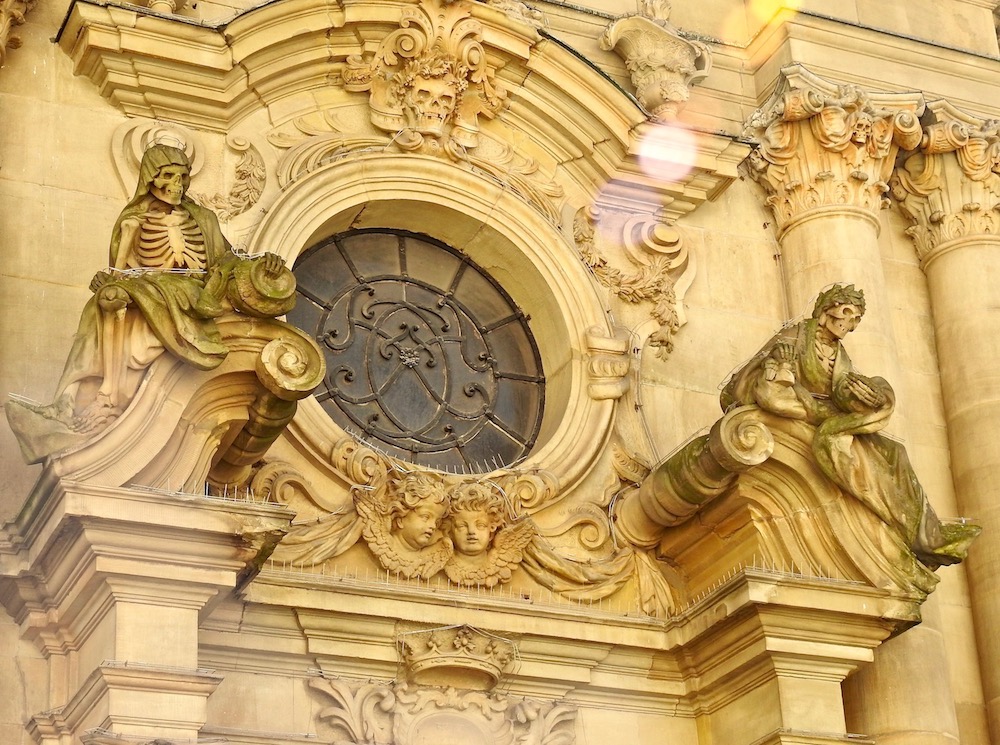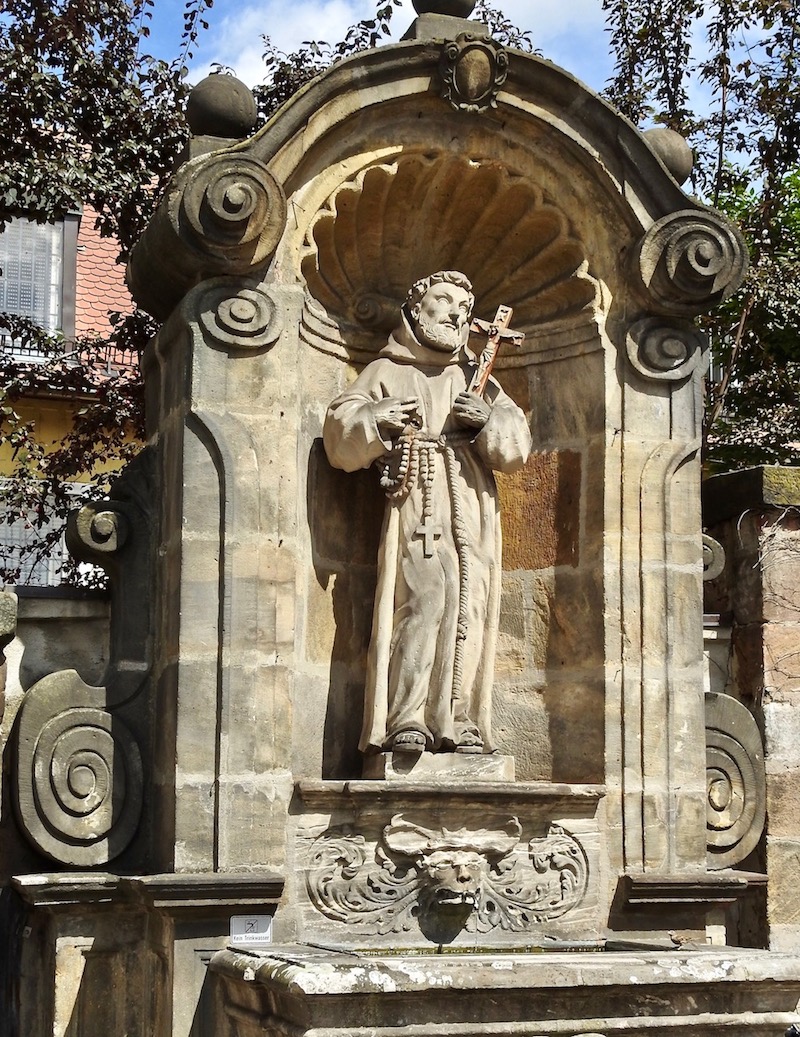
Not just a pretty face, Regensburg has electronic and manufacturing industries to support its 150,000 inhabitants. Toshiba, BMW and Siemens have factories here. Also, a strong university contingency is here with a student population of 30,000.
The bustling city center (UNESCO) has shops, department stores, St. Peter’s Cathedral, City Hall, restaurants, coffee shops, gelato shops (on every corner), and 12,000 city residents.
The German word, kramgasse, describes the narrow streets filled with shops from jewelry to cuckoo clocks to Christmas ornaments. I wanted an ornament for the Christmas tree and decided nothing would be more fitting than a glass ornament, made in Germany, depicting a cuckoo clock. Black Forest cuckoo clocks are prized items in Regensburg.

This huge collection of glass ornaments made in Germany. I bought one in the shape of a cuckoo clock which Regensburg is famous for.
Here come the Romans:
In 179 AD, Roman Emperor, Marcus Aurelius, wanted to protect the northern most reaches of the Holy Roman Empire. He had a fortress built (Castra Regina) and stationed 6,000 soldiers in what is now the city center of Regensburg. Farms and businesses sprang up to supply food and goods to the soldiers. The local Germanic tribes intermarried with the Romans. In the 5th century, the Romans abandoned the fort, but the stone edifices remained to this day. This formed the foundation for the formation of the town.
Legend of the Stone Bridge:
Regensburg and the Stone Bridge are located where the Danube bends to the south at its northernmost point. The Stone Bridge was built in only seven years, 1135-1146. Crusaders crossed the bridge on their way to Holy Lands.
The Legend of the Bruckmandl:

Bruckmandl is the little man on the Stone Bridge. He is the bridge’s master builder.He is looking toward St. Peter’s Cathedral.
iStock photo
Stone Bridge’s (Steinerne Brucke) master builder, Bruckmandl, made a bet with St. Peter’s architect as to who would finish the construction sooner. The bridge was delayed and the master builder asked the devil for help. Of course, the devil was happy to accommodate the request, but as a reward, the devil would take the souls of the first three living creatures who crossed the bridge. Traditionally, the bishop, the duke and a wealthy merchant would cross the bridge first. Bruckmandl didn’t want the devil to take them, so he came up with a way to trick the devil. The first “living creatures” to cross the bridge were a dog, a rooster, and a hen. The devil was furious that he had been tricked and attempted to destroy the bridge by shoving it upwards with his back. He didn’t succeed, but the bridge will forever have a hump in the middle.
Gothic St. Peter’s Cathedral:
The construction of St. Peter’s Cathedral began in 1275, completed 600 years later in 1634.
The spires added in 19th century. When you enter the cathedral, notice how dark it is inside. This is the Gothic architectural style. The stained glass windows were not only important to tell the religious story, but also to allow light into the building. Definitely, the stained glass windows are the highlight of the cathedral.
More photos of St. Peter’s Cathedral:

Gorgyle on St. Peter’s Cathedral. Not only did the gorgyle help drain the rain water off the sides of the building, but kept evil away from entering the church.
Coming out untouched in WWII:
Even though there were two targets around Regensburg, the Messerschmitt aircraft factory and oil refinery, which were bombed during 1945, the town itself was left untouched. This has been a real plus for Regensburg for two reasons: 1. they didn’t loose their historical buildings and Roman artifacts, and 2. they didn’t tear down damaged buildings (there weren’t any) and rebuild modern ones. The city’s appearance has become a tourist attraction bringing in lots of Euros to the city.
Famous for Sausage Making and best sausage in Germany:
Regensburg claims to produce the best sausage in Germany. You be the judge. One of the best places to test this claim is Historische Wurstkuche (500 years old), located on the shore of the Danube just down from the Stone Bridge.
I tried a plate of sausage and saurkraut. The mustard is excellent. Be sure to buy a bottle for 2 euros.
Regensburg Sausage Kitchen:
There is a sausage kitchen where you can sign-up for classes to learn how to make Regensburg sausage. Have fun while learning what makes Regensburg sausage the best in Germany.
Regensburg offers culture, history and great food. Definitely, one of my favorite stop on this Viking River Cruise.
About the Author:
In 2010, Annie Coburn created Fab Placez. In 2014, she changed the name of her website to FAB Senior Travel to better define her target audience, mature travelers. In order to provide diversity of locations and topics for her subscribers, she publishes travel articles from other writers, as well as her own.
You are invited to subscribe:
Website: http:// www.fabseniortravel.com














